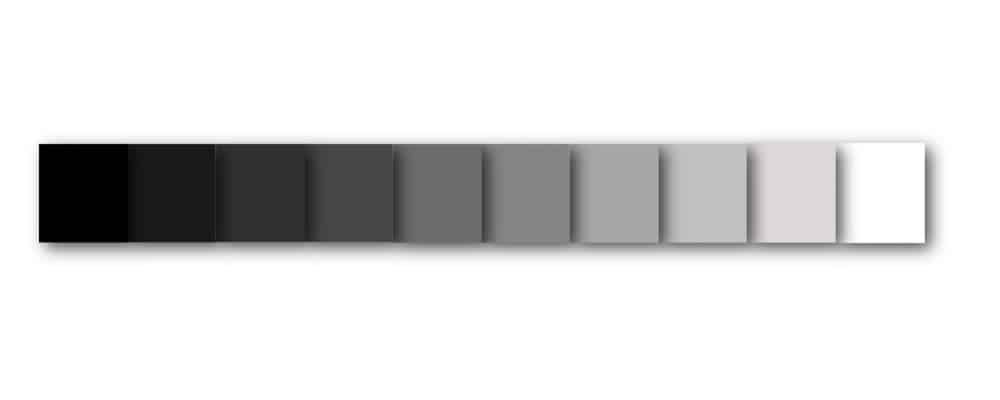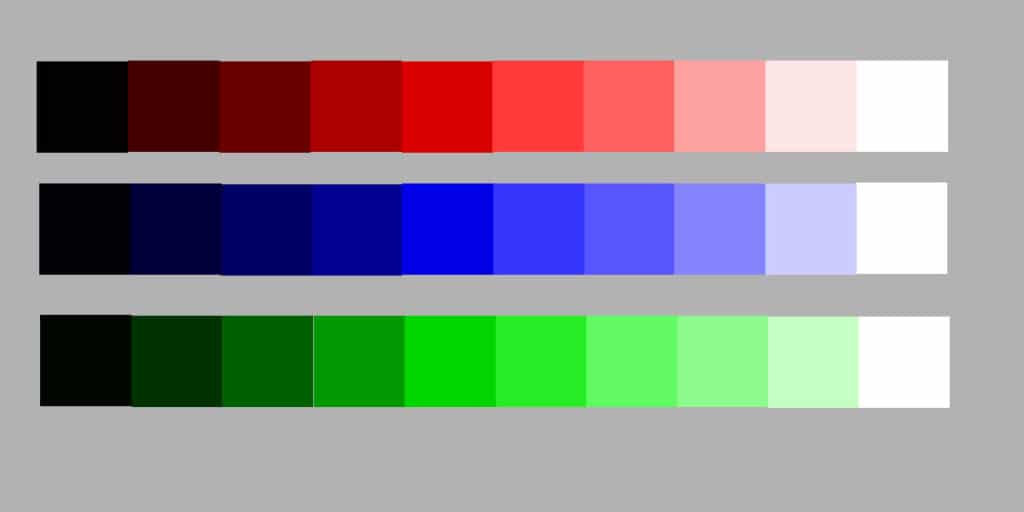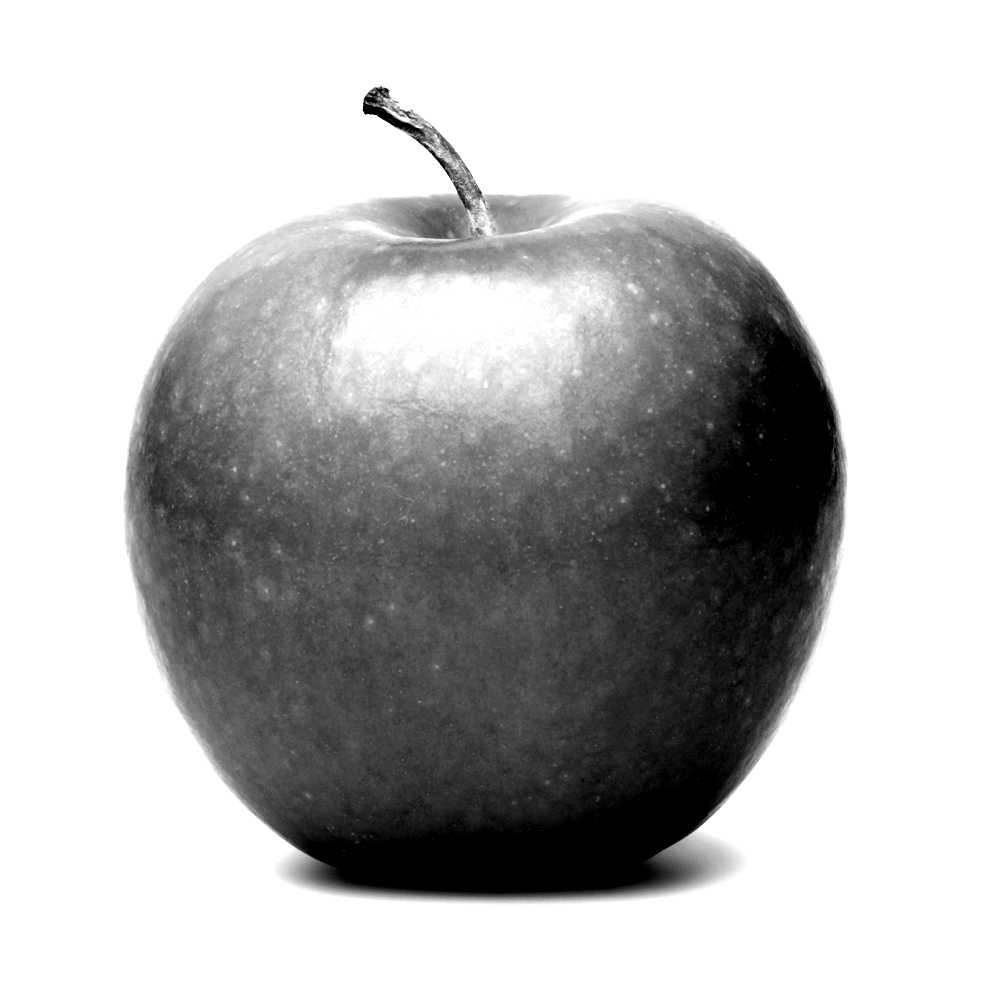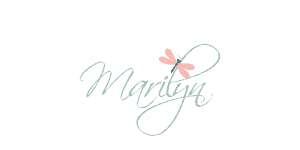Multiple Value of One Color Multiple Value of One Color in Art

What is Value?
Are you dislocated about exactly what value is and how you would use value in your artwork?
Just put, value is one of the seven elements of art that defines how lite or dark a color is. Lighter values are referred to every bit tints. Darker values are referred to equally shades.
This variation in value is what enables you to have shadows, highlights and contrasts in your painting.
Value is what makes an apple look like an apple rather than a red circle on your canvass. It's the lights, darks and mid-tones that give a painting dimension and form.
Value also indicates the light source in a painting. Shadows will take night values and highlights volition have a light value.
This post may contain affiliate links. If you click a link and buy, I may receive a small-scale commission. Delight run into my full privacy policy for details.
What is a Value Scale?

Value refers to the lightness or darkness of a color based on how close it is to white on a value scale . A value scale is a strip of squares or blocks ranging from the darkest dark gradually progressing to the lightest light.
The dark squares are shades, the heart squares are mid-tones and the lighter squares are tints. You use these values in your painting or cartoon to get depth, dimension and contrast.
It works the same way for colors. Y'all take darker shades, mid-tones and lighter tints of the same color.
Understanding value will help you become your lights light plenty and your darks night enough to have good contrast in your artwork and pb to the success of a painting.

Y'all tin can do a painting with a very limited color palette and still have a broad diversity of hues to give yous contrast and depth.
A value scale is a good tool to keep handy to check that the values in your painting or cartoon are correct. You can make your own by merely drawing or painting squares of gradually lightening colour from black to white like the to a higher place picture show.
You can too purchase a gray calibration from your fine art supply shop or Amazon. I take purchased a gray scale and value finder considering I like the sturdiness of it.

Why It Is Important To Understand Value

Value is actually more important than color in a painting. If your values are off the whole painting will not look cohesive and may even be confusing to the viewer.


Even with the color removed, an apple nevertheless looks like an apple. The values are what give the apple the illusion of shape and dimension. The color is just the icing on the block.
Learning the basics of value will significantly improve your painting. This is what enables you to pigment an object and give it the illusion of being three dimensional instead of flat on your canvas.
Value as well enable you lot to create the highlight or focal point in your painting by contrasting the light against dark.
The more tonal value in a painting the less dissimilarity there is. Using multiple unlike values of the same colour kind of "washes out" the painting and gives you little contrast. Of form, there are exceptions.
To produce high contrast you should use a express range of values.
The viewer's eye is automatically fatigued to the area of highest contrast and so knowing how to attain the proper contrast in your piece of work will describe your viewer to the principal expanse of focus in your piece.
How to Meet Value in a Subject
The first step in placing values correctly in a painting is to determine where the values are in your subject. At that place are several means to do this:
Using a Value Scale
Y'all can use your value scale to determine where the lights and darks are in your reference photo or bailiwick. Concord the scale against your photo and move it around to see where the darkest and lightest values are and how they compare to the elements effectually them.

Squinting to Run across
If you don't accept a value calibration you can attempt this onetime trick. Footstep dorsum from your work and blur your vision by squinting your eyes. This helps filter the light and helps you run across the lights and darks ameliorate. It's not perfect only works in a compression.
Doing a Tonal Painting
Another manner of judging value is past doing a tonal painting. You do this past doing your painting entirely in values of gray. This is known as Grisaille and is used to do underpaintings and and then glaze color over the grays.
Use various tones of grey to paint lights, darks and mid-tones. Concentrate on the shapes in your painting and where the lights and darks are rather than specific colors.
It doesn't need to wait like a finished piece, it but needs to give you a full general idea of where the values are.
Drawing Your Values
For me, doing a graphite drawing is the all-time way to understand where the values are in my reference. It certainly doesn't need to be as detailed as my cartoon below. I sometimes become dorsum to my sketch and add more than detail to make it a framable piece.
You can run into from the drawing where the lights and darks are in the photo. Use the drawing as a reference when you are non sure how calorie-free or dark something needs to be.


Convert Your Photo to Black and White
You can also take a photograph of your bailiwick and convert it to black and white. Most jail cell phones today are capable of editing your photo and converting it to grey scale or black and white.
Yous could likewise have picture of your reference and browse it into your computer and apply the photo editor on your computer or a program similar Photoshop to remove the colour.
The blackness and white flick volition evidence yous the variations in value without all of the color noise so yous become a ameliorate idea where the shadows and highlights should be.


How to Use Value in Your Painting
Now that you take some ideas for seeing the values in your subject field, you can use what you learned and apply it to your painting. Reference your grayscale or other methods you used to cheque that the lights and darks are right.
A skilful fashion to check the value placement is to take a film of your painting in progress and change it to black and white. You tin can compare it to a black and white picture of your reference or to your value calibration and y'all should be able to easily see if something is a bit too dark or likewise calorie-free and adjust appropriately.
And then if a dark expanse of your reference photo matches the darkness of the second cake on your value scale, that aforementioned area of your painting should too exist as dark equally that cake.

Doing a value study is a practiced way to practise and learn more than about value. Do a painting using dissimilar values of one color.
Work on getting your nighttime areas dark enough and your light areas light enough to give you skillful contrast with the centre value. Sometimes it helps to do a value calibration with your chosen colour to see the range of tones and which ones you lot should employ.
In that location is a lot to learn about value, colour, contrast, shading and highlighting in art. As with virtually things, it comes easier with do and y'all learn a lot by doing it. If you would like to learn more than about highlights and shadows you lot can read my mail service Beginners Guide to Highlighting and Shading. I also take a post on the basics of color theory that y'all might detect helpful.
Endeavor out some of these techniques in your adjacent painting and come across what a deviation paying attention to value makes in your work. As with annihilation, actually putting it into practice will requite you a improve understanding of how it works.
Thanks for reading. 😊

Source: https://trembelingart.com/value-painting/
0 Response to "Multiple Value of One Color Multiple Value of One Color in Art"
إرسال تعليق